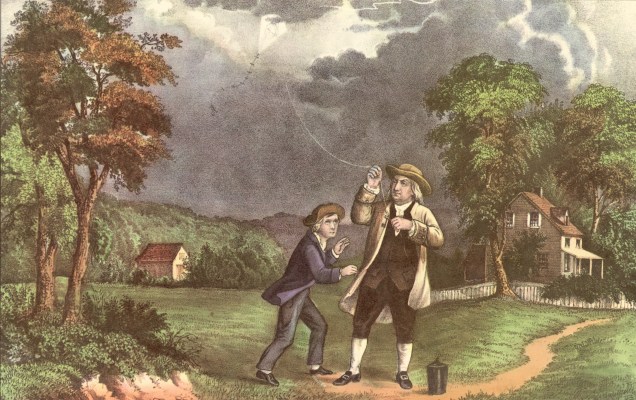For some of us, hot dogs, patriotic songs and fireworks are enough.
We here at TechCrunch expect more of our readers. Why be satisfied with fireworks when you could literally launch a Kickstarter into the sky.
If you’re like me, you were likely quite disappointed to find out that Hamilton wasn’t about an epic duel, I mean “syndicate,” between Backstage Capital’s Arlan Hamilton and Google Ventures’ Kim Burr.
Somehow, before CrunchBase, our Founding Fathers must have gotten their startup fix. Here’s how they hit 10X.
Be rich
Ben Franklin paid his eye doctor to slice the lenses in his reading glasses in half and attach them to a half-lens from his eyeglasses. He briefly considered founding Warby Franklin but ultimately decided not to profit off his invention. The bifocal idea was rapidly adopted by other founding fathers. Franklin must have understood that there is no better way to build up hype around a product than refusing to mass-distribute it and only letting celebrities get access to it.
Be patient
The first patent for soda water in the US was issued in 1810. It took 22 years for soda to catch on despite already having a patent, not needing FDA approval, and maintaining an ultra-lean team of two.
Be known
John Fitch took a play from Travis Kalanick and decided Steamboats were too expensive for the everyday seafarer. He fashioned a prototype with spare parts and the help of a local clockmaker. The Continental Congress refused a term sheet and Fitch instead decided to increase the value of his company with monopolies to operate in individual states.
He bootstrapped until he was able to close an angel round from high net-worth individuals in Philadelphia. His Uber-for-boats never really caught on. Fitch took his own life with a drug overdose after taking bad investor advice to move into the economically volatile French market.
